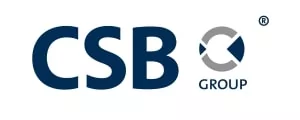In the dynamic environment of financial services, combating financial crimes such as money laundering and terrorism financing is paramount. To fortify these efforts, the Three Lines of Defence model has emerged as a crucial framework, providing a structured approach to risk management. In this article, we delve into the application of the Three Lines of Defence model in the context of Anti-Money Laundering (AML) and Countering the Financing of Terrorism (CFT).
The Three Lines of Defence Model
The Three Lines of Defence model is a risk management framework that delineates the roles and responsibilities of various stakeholders in an organisation. In the context of AML/CFT, this model is instrumental in fostering a comprehensive approach to identify, assess, and mitigate risks associated with financial crimes.
First Line of Defence: Operational Management
The first line of defence involves the frontline staff directly engaged in customer interactions and transaction processing. In the AML/CFT context, this includes employees dealing with client onboarding, transaction monitoring, and day-to-day operations. Robust AML/CFT policies and procedures at this level are essential to ensure that potential risks are identified at the earliest stage. Adequate training and awareness programs empower front-line staff to recognise suspicious activities and report them promptly.
Second Line of Defence: Risk Management and Compliance
The second line of defence comprises risk management and compliance functions including the MLRO function. This layer oversees and supports the first line by establishing policies, conducting risk assessments, and ensuring adherence to regulatory requirements. In the AML/CFT realm, the second line plays a pivotal role in developing and implementing risk-based AML/CFT programs. Regular monitoring and testing of these programs ensure their effectiveness and enable timely adjustments in response to emerging threats and regulatory changes.
Third Line of Defence: Internal Audit
The third line of defence involves internal audit functions, which provide independent assurance on the effectiveness of AML/CFT controls. Internal auditors assess whether the first and second lines are operating efficiently and in compliance with policies and regulations. A robust internal audit function not only identifies gaps and weaknesses in the AML/CFT framework but also recommends improvements to enhance the overall effectiveness of the program.
Challenges and Best Practices:
Implementing the Three Lines of Defence model in AML/CFT efforts is not without challenges. Coordination among the three lines, resource allocation, and staying abreast of evolving financial crime trends pose ongoing challenges. However, best practices involve fostering a culture of compliance throughout the organisation, maintaining open communication channels between the lines, and leveraging technology for efficient monitoring and reporting.
Conclusion
As financial institutions navigate the complex landscape of AML/CFT compliance, the Three Lines of Defence model emerges as a cornerstone for effective risk management. By clearly defining roles and responsibilities at each level, organisations can create a robust framework to identify, assess, and mitigate risks associated with money laundering and terrorism financing. In an era where financial crimes continue to evolve, a proactive and integrated approach is crucial to safeguarding the integrity of the global financial system.
The content of this article is intended to provide a general guide to the subject matter. Specialist advice should be sought about your specific circumstances.
We operate a free-to-view policy, asking only that you register in order to read all of our content. Please login or register to view the rest of this article.


